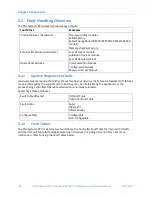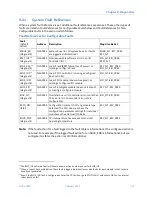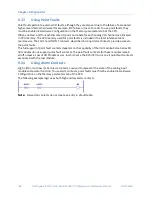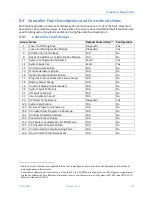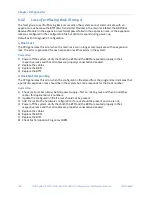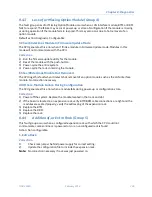
Chapter 9. Diagnostics
396
PACSystems* RX7i, RX3i and RSTi-EP CPU Programmer's Reference Manual
GFK-2950C
9.3.3
Using Point Faults
Point faults pertain to external I/O faults, although they are also set due to the failure of associated
higher-level internal hardware (for example, IOC failure or loss of a rack). To use point faults, they
must be enabled in Hardware Configuration on the Memory parameters tab of the CPU.
When enabled, a bit for each discrete I/O point and a byte for each analog I/O channel are allocated
in CPU memory. The CPU memory used for point faults is included in the total reference table
memory size. The FAULT and NOFLT contacts, described in
provide access to
the point faults.
The full support of point fault contacts depends on the capability of the I/O module. Some Series 90-
30 modules do not support point fault contacts. The point fault contacts for these modules remain
all off, unless a Loss of I/O Module occurs, in which case the RX3i CPU turns on all point fault contacts
associated with the lost module.
9.3.4
Using Alarm Contacts
High (-[HA]-) and low (-[LA]-) alarm contacts are used to represent the state of the analog input
module comparator function. To use alarm contacts, point faults must first be enabled in Hardware
Configuration on the Memory parameters tab of the CPU.
The following example logic uses both high and low alarm contacts.
Note:
HA and LA contacts do not create an entry in a fault table.
Summary of Contents for PACSystems RSTi-EP
Page 357: ......
Page 466: ...Chapter 9 Diagnostics GFK 2950C February 2018 451 ...



